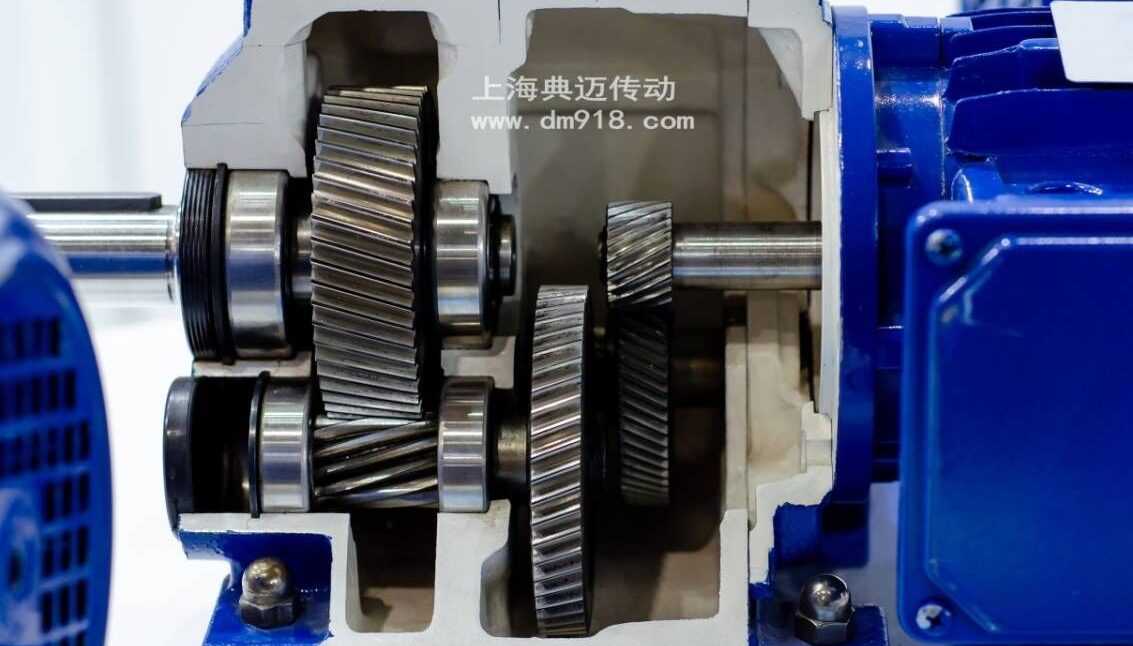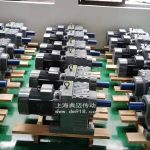The internal structure of the R Series helical gear hardened tooth surface reducer usually includes the following main components:
1. Housing: Generally made of cast iron, it has high strength and stiffness, providing support and protection for the internal gears and other components.
2. Gear set: This is the core component of the reducer. The R series usually adopts helical gear transmission. The tooth surface of the helical gear is inclined at a certain angle to the axis. Its characteristics are stable transmission and strong bearing capacity. The gears undergo high-frequency heat treatment and have high hardness and wear resistance.
– Primary gear: Connected to the input shaft, it transmits the input power to the next stage of gears.
– Intermediate stage gears (if it is a multi-stage reducer): Used for further deceleration and increase of torque.
– Final stage gear: Connected to the output shaft, it outputs the power after deceleration and torque increase.
3. Input shaft and output shaft: The input shaft is used to receive the torque from the external power source, and the output shaft transmits the torque processed by the reducer to the working machinery. They are usually made of high-strength materials and undergo precision processing to ensure the parallelism of the shafts and the fitting accuracy with the bearings.
4. Bearings: Installed on the shafts, they are used to support the rotation of gears and shafts, reduce friction and wear, and ensure the precise position of the shafts.
5. Shaft seals: Used to prevent the leakage of lubricating oil inside the reducer and at the same time prevent external impurities from entering the housing.
6. Lubricating oil: Filled in the housing, it plays the role of lubricating gears and bearings, dissipating heat and reducing wear.
In some R series reducers, the following parts may also be included:
1. Reinforcing ribs or partitions: Used to enhance the structural stiffness of the housing.
2. Installation interfaces for sensors used to monitor parameters such as temperature and rotational speed (depending on specific requirements).
Different models and specifications of R series helical gear hardened tooth surface reducers may have slightly different internal structures, but in general, they all achieve the functions of deceleration and torque transmission based on the above basic components. The specific structural design will be optimized and adjusted according to factors such as the power, transmission ratio, installation method and application scenarios of the reducer.
For example, some R series reducers adopt an integral cast housing, which makes the housing structure stiffer and easier to improve the strength of the shaft and the service life of the bearings; some are designed with a small offset output to make the most of the housing space, and the secondary and tertiary transmissions can be achieved in the same housing; and there are also RM series specially designed for agitation, which can bear larger axial forces and radial forces, etc.
These characteristics of the internal structure make the R series helical gear hardened tooth surface reducer have the advantages of high transmission efficiency, low energy consumption, low vibration, low noise, high bearing capacity, high reliability and durability, and are widely used in many industrial fields such as chemical agitation, lifting and transportation, steel metallurgy, power energy, coal mining, cement building materials, paper and light industry. In practical applications, to select the appropriate model and specification of the R series reducer, it is necessary to comprehensively consider various factors such as the required transmission ratio, output torque, installation space, working environment, etc. At the same time, correct installation, use and maintenance also play an important role in the performance and life of the reducer.



